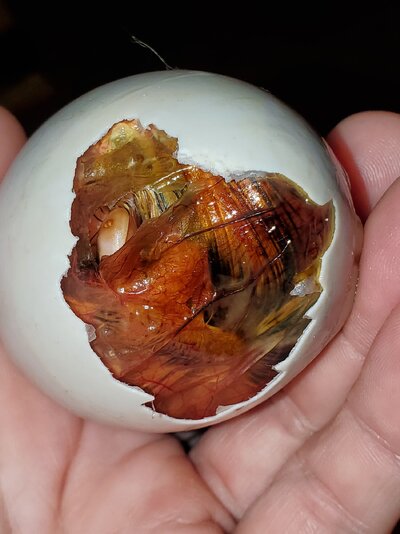OK, I have a question for you long-time, experienced incubators.
If a chick/duckling has NOT pipped into the air cell but is chirping, would that mean it has pipped in a different part of the egg and is breathing air, right?
Can a chick/duckling chirp WITHOUT breaking the shell membrane?
If a chick/duckling has NOT pipped into the air cell but is chirping, would that mean it has pipped in a different part of the egg and is breathing air, right?
Can a chick/duckling chirp WITHOUT breaking the shell membrane?



